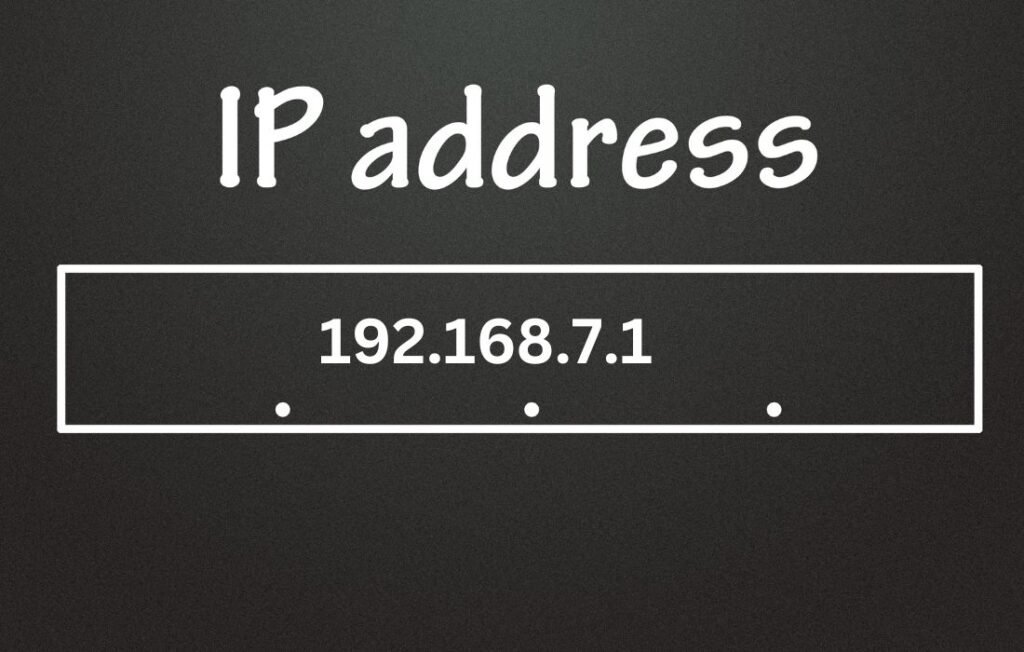192.168.7.1 IP Address: A Comprehensive Guide

In the world of networking, understanding how IP addresses work is crucial for managing devices and ensuring smooth communication within a local network. One such IP address, 192.168.7. 1, plays a significant role, especially in small networks. This article delves into the specifics of 192.168.7.1, covering its uses, configuration, troubleshooting, and more.
What is IP Address 192.168.7.1?
192.168.7.1 is a private IP address that belongs to the IPv4 address range reserved for private networks. It is part of the 192.168.0.0 to 192.168.255. 255 range, which is often used for local area networks (LANs) in homes, schools, and businesses. This IP address is not routable on the public internet, meaning it cannot be accessed directly from outside the local network.
Why Use a Private IP Address?
Private IP addresses are used within a local network to allow devices to communicate with each other without needing access to the broader internet. These addresses help conserve public IP addresses and improve security within the network by isolating internal communications.
Read Also: TheGameArchives Updates | Drawing:a4z_-ymtkr8= Cat | Boston Celtics vs Dallas Mavericks Match Player Stats
Common Uses of 192.168.7.1
1. Default Gateway
192.168.7.1 is often used as the default gateway address for routers or modems within a local network. The default gateway is the device that routes traffic from the local network to other networks, including the internet. When 192.168.7. 1 is set as the default gateway, devices on the network send their outbound data to this IP address for forwarding to the appropriate destination.
2. Device Configuration
This IP address is frequently assigned to network devices such as routers, modems, or wireless access points. Network administrators or users can access the device’s configuration interface by entering 192.168.7.1 into a web browser. This allows them to change settings, monitor network activity, update firmware, and perform other administrative tasks. By following the guidelines and infographics outlined in this article, you can ensure that your network is set up correctly, secure, and running smoothly.
3. Embedded Systems
In some cases, 192.168.7.1 is used in embedded systems or development boards, such as the BeagleBone, for configuring and controlling the device. It provides a way for developers to access the system’s interface and make necessary adjustments during the development process.
Accessing the Configuration Interface
To access a device using 192.168.7.1, follow these steps:
- Ensure Connectivity: Make sure your computer or mobile device is connected to the same network as the device using 192.168.7. 1.
- Open a Web Browser: Launch your preferred web browser (e.g., Chrome, Firefox, Edge).
- Enter the IP Address: In the address bar, type
http://192.168.7.1and press Enter. - Login Prompt: You’ll be prompted to enter a username and password. This information is usually provided by the device manufacturer. If you haven’t changed the default credentials, refer to the device’s manual or check online for the default login details.
Once logged in, you can configure various settings, such as network security, wireless configuration, and firmware updates.
Configuring a Router Using 192.168.7.1
1. Initial Setup
If 192.168.7.1 is the default IP address of your router, the initial setup typically involves:
- Setting Up a Password: Change the default password to a strong, unique one to prevent unauthorized access.
- Configuring the Network Name (SSID): Name your wireless network so that it can be easily identified by users.
- Setting Up Security: Choose a security protocol such as WPA3 to protect your wireless network from intruders.
- Configuring DHCP: Determine the range of IP addresses that will be assigned to devices within your network.
2. Advanced Configuration
More advanced settings include:
- Port Forwarding: To allow specific traffic from the internet to access devices within the network.
- QoS (Quality of Service): Manage bandwidth usage by prioritizing certain types of traffic.
- VPN Configuration: Set up a Virtual Private Network for secure remote access to your network.
Troubleshooting Common Issues with 192.168.7.1
1. Unable to Access 192.168.7.1
If you cannot access the device’s configuration interface at 192.168.7. 1, try the following steps:
- Check Connection: Ensure your device is connected to the network and the router is powered on.
- IP Address Conflict: Verify that no other device on the network is using 192.168.7. 1. If there is a conflict, you may need to reassign IP addresses.
- Clear Browser Cache: Sometimes, clearing the browser cache or trying a different browser can resolve access issues.
- Check IP Configuration: Ensure your device is set to obtain an IP address automatically (if using DHCP) or that it is on the same subnet if you’re using a static IP.
2. Forgotten Login Credentials
If you’ve forgotten the login credentials for the configuration interface, you can:
- Check the Device’s Manual: The default username and password are usually printed in the manual or on a sticker on the device.
- Reset the Device: If all else fails, you can reset the device to factory settings. This will restore the default login credentials but will also erase all custom configurations.
3. IP Address Conflict
An IP address conflict occurs when two devices on the same network are assigned the same IP address. To resolve this issue:
- Change IP Address: Access the configuration interface of one of the devices and change its IP address to a different one within the same subnet (e.g., 192.168.7.2).
- Check DHCP Settings: Ensure that your router’s DHCP server is set to assign unique IP addresses within the correct range.
Security Considerations
Using 192.168.7.1 in a private network comes with security responsibilities. Here are some tips to keep your network secure:
- Change Default Passwords: Always change the default login credentials to something more secure.
- Regular Updates: Keep your device’s firmware updated to protect against vulnerabilities.
- Use Strong Encryption: Ensure that your wireless network is encrypted using strong protocols like WPA3.
- Monitor Network Activity: Regularly check connected devices and network activity to detect any unusual behavior.
Conclusion
The IP address 192.168.7. 1 is a versatile and commonly used address in private networks, particularly for routers and other network devices. Understanding how to access, configure, and troubleshoot devices using this IP address is essential for anyone managing a home or small business network. By following the guidelines outlined in this article, you can ensure that your network is set up correctly, secure, and running smoothly.



